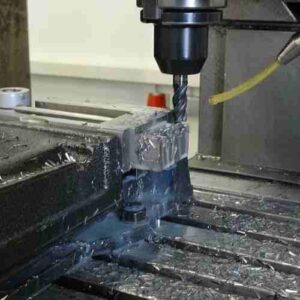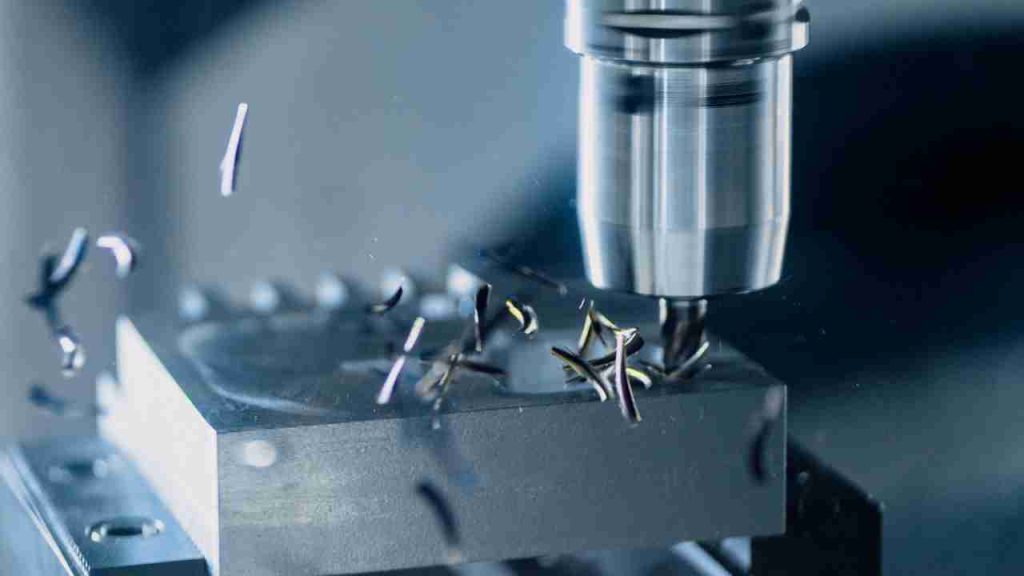For a good reason, aluminum has long been a favored material among DIY enthusiasts. This lightweight, robust, and corrosion-resistant metal is simple to work with and can be used in many applications, including home improvement projects, automobile components, and aerospace components. Its flexibility and low cost make it an excellent option for new and experienced builders.
Milling is machining that involves removing material from a workpiece to produce a flat surface, carve holes, or shape edges. Although experts prefer specialist milling equipment, many DIY enthusiasts have found that a drill press can be converted to do milling chores with excellent results. This blog article will walk you through milling aluminum using a drill press, including helpful hints and recommendations.
This blog article will examine the advantages of milling aluminum with a drill press, the necessary equipment and accessories, correct workpiece preparation, milling processes, recommendations for a quality finish, and some practical project ideas.
 Why Mill Aluminum with a Drill Press?
Why Mill Aluminum with a Drill Press?
1. Cost-effective alternative to dedicated milling machines
The cost reduction is a key reason why DIY enthusiasts grind aluminum using a drill press. Specialized milling machines may cost thousands of dollars in certain cases. On the other hand, a good-quality drill press can be obtained for a fraction of the price, making it a more cost-effective alternative for individuals wishing to mill aluminum without breaking the bank.
2. Space-saving solution for home workshops
Another benefit of utilizing a drill press for milling aluminum is saving space. Milling machines may be fairly big, taking up precious workshop space. Drill presses are typically smaller and can fit into most home workshops. As a result, they are an appealing option for DIY enthusiasts who wish to optimize their workspace while reaping the advantages of milling capabilities.
3. Versatility of drill presses for various applications
Drill presses are very flexible instruments that may be used for various tasks other than drilling holes. Because of its flexibility, you may handle a wider range of jobs with a single tool, making it a vital addition to any DIY enthusiast’s inventory.
A drill press may be transformed into a makeshift milling machine capable of processing aluminum and other materials, such as wood and plastics, with the correct additions and accessories.
How to mill aluminum with drill press?
Tools and Accessories Required:
To mill aluminum using a drill press, you’ll need the following equipment and accessories:
- A suitable drill press: Use a strong, stable floor-standing type to reduce vibrations.
- Milling bits: Using carbide or high-speed steel (HSS) end mills with two or three flutes for aluminum.
- Workholding devices: Secure the workpiece by using a milling vise or clamps suitable with your drill press.
- Lubricants and coolants: Use an aluminum-specific cutting fluid or coolant to minimize heat and enhance surface finishes.
- Safety equipment: Use safety goggles, gloves, and a dust mask, and keep your workstation well-lit and hazard-free.
 How to Prepare Your Aluminum Workpiece?
How to Prepare Your Aluminum Workpiece?
Good planning is essential for effective aluminum milling. To prepare your workpiece, follow these simple steps:
- Choose the appropriate aluminum grade: Select an appropriate grade depending on the needs of your project, taking into account aspects such as strength, corrosion resistance, and machinability.
- Measure and mark: Using appropriate instruments such as rulers, calipers, and a marking pen, accurately measure and mark the areas to be milled.
- Secure the workpiece: With an appropriate milling vise or clamps, securely connect the aluminum piece to the worktable, assuring stability and safety while milling.
- Double-check the workpiece and work holding arrangement to guarantee a secure fit and to avoid any possible movement or vibrations during the milling operation.
Aluminum Milling Techniques:
Keep the following crucial strategies in mind while milling aluminum to produce outstanding results:
- Prepare the drill press for milling operations by adjusting the drill press for optimum alignment, speed, and depth settings.
- Optimize feed rate and spindle speed: For smooth and efficient cutting, determine the optimal feed rate and speed depending on your aluminum grade and milling bit.
- Choose the best milling method: Using your workpiece and desired finish, choose between climbing and traditional milling, considering parameters such as chip removal and tool life.
- Adhere to a step-by-step procedure: Approach the milling process methodically, carefully completing each cut and reviewing your progress periodically to preserve precision and get the desired result.
Suggestions for a High-Quality Finish:
Consider the following vital principles when milling aluminum to obtain a high-quality finish:
- Effectively apply lubricants: Apply cutting fluid or coolant continuously to minimize heat and friction, improving tool life and surface smoothness.
- Maintain milling bits sharp: Inspect and maintain your milling bits regularly to guarantee maximum cutting efficiency and a clean finish.
- Fine-tune your approach: Always enhance your milling technique by altering feed rates, spindle speeds, and milling processes to meet the unique needs of your project.
- Clean and deburr: Following milling, clean the workpiece and gently deburr the edges to obtain a polished and professional look.
Practical Aluminum Milling Projects:
Discover the flexibility of aluminum milling with these useful project ideas:
- Custom brackets and mounts: Make custom brackets or mounts for shelves, electronics, or other equipment to ensure a precise fit and improved functioning.
- Electronics enclosures: Create specialized enclosures to protect and organize electronic components such as circuit boards, amplifiers, and power supplies.
- Personalized keychains and badges: Create one-of-a-kind keychains or badges with elaborate patterns to demonstrate your creativity and milling abilities.
- Sculptures and artwork: Explore creative expressions by milling metal into magnificent sculptures or ornamental components for your home or office.
Frequently Asked Questions (FAQs)
Can I use a regular drill press for milling aluminum?
Yes, you can use a regular drill press for milling aluminum, but it is essential to ensure that it is a sturdy and stable floor-standing model to minimize vibrations. Additionally, you will need to use appropriate milling bits, workholding devices, and lubricants to achieve the best results.
What type of milling bits should I use for milling aluminum?
For milling aluminum, it is recommended to use carbide or high-speed steel (HSS) end mills with two or three flutes. These types of milling bits provide better cutting performance and durability when working with aluminum.
What is the best way to secure my aluminum workpiece while milling?
To secure your aluminum workpiece while milling, use an appropriate milling vise or clamps compatible with your drill press. Ensure that the workpiece is firmly attached to the worktable to prevent any movement or vibrations during the milling process.
How can I determine the optimal feed rate and spindle speed for milling aluminum?
The optimal feed rate and spindle speed for milling aluminum will depend on the specific grade of aluminum and the milling bit you are using. Generally, higher spindle speeds and slower feed rates are recommended for aluminum to minimize heat buildup and ensure smooth cutting. Experiment with different settings while monitoring the quality of the cut to find the best combination for your project.
What is the difference between climbing and conventional milling?
Climbing milling, also known as down milling, involves feeding the workpiece into the cutting tool in the same direction as the tool’s rotation. This method typically provides better surface finishes and improved tool life. Conventional milling, or up milling, involves feeding the workpiece against the cutting tool’s rotation. This method may result in better chip removal and is sometimes preferred for roughing operations.
Last words:
For DIY enthusiasts, milling aluminum with a drill press is cost-effective, adaptable, and satisfying. You may effectively do bespoke aluminum projects by utilizing the correct equipment, prepping your workpiece, learning milling processes, and aiming for a superior finish.

Don’t be afraid to explore and learn from your mistakes since each project will help you polish your milling abilities and confidence. It’s time to get started and put your creative ideas into action!
- Where are WEN drill presses made? - April 2, 2023
- Where are Rikon drill presses made? - April 1, 2023
- Where are Powermatic drill presses made? - April 1, 2023






